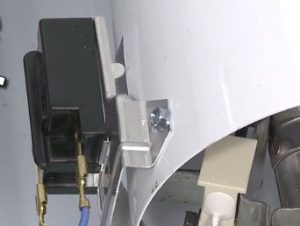Is your dryer not heating? Here’s how to fix it
Sometimes unexpected things happen in everyone’s life. You load wet clothes in the dryer and get them as wet as they were before. It might be because your dryer does not produce heat. There are a lot of possible causes of this problem but the first thing you should find out is what type of dryer you have: gas or electric one. Before starting any repair, turn off electrical power and shut off gas supply.
Follow these simple tips to get your dryer working properly:
-
Check the power
If your dryer is electric, make sure that the breaker to the dryer’s electrical circuit is fully on. Since electric dryers require 240 volts to run, their circuit is run through a dual breaker switch. Sometimes half of the breaker switch is off or failed which may result not enough power to produce heat. Pop the breaker off and on to see if the dryer will now produce heat. If it does, have the breaker replaced.
-
Check if the controls are set properly
Run your dryer for a few minutes to make sure you do not have the controls on a non-heat setting such as «Fluff Air” or “Wrinkle Release”.
-
Check the vent hose
Make sure that the dryer vent hose is not clogged and restricting airflow. If it is clogged, clean out the inside of the dryer vent hose. Slide the dryer forward so you can get behind it. Squeeze the clip at both ends and pull the hose outward to disconnect the air vent hose from the wall and the dryer. Use at long-handled bristle brush to clean out the dryer vent. Then, reattach the vent hose and slide the dryer back. Plug the dryer back into the power outlet and run a test.
If you have checked all these points and your dryer still, does not work, professional appliance repair help might be required. You are welcome to call us (818) 600-2559 and schedule an appointment with our qualified technician.
Things that might be causing the issue with gas and electric dryers:
-
Blown thermal fuse
The thermal fuse is a safety device designed to protect the dryer from overheating. The fuse is normally located on the blower housing although some dryer models have an additional fuse on the burner assembly/ heating element. If the dryer overheats, the fuse will blow and cut off the power to the burner/ heating element. You can use a multi-meter to determine if there is a continuous electrical path present in the part. If not, the fuse has blown and will need to be replaced. Be aware that the failure of the thermal fuse is often caused by the venting system being clogged with lint. To improve air flow we recommend cleaning out the vent at least once a year.
-
Faulty thermostat
The high-limit thermostat located on the burner assembly/heating element monitors the dryer temperature and will shut the burner /the heating element off if the dryer overheats. The cycling thermostat normally located on the blower housing will cycle the burner on and off to regulate the air temperature. If either of the thermostats fail, the burner/ the heating element may not work at all. You can use a multi-meter to test the thermostats for continuity to determine if the component has failed or not.
-
Defective gas valve solenoid coils (for gas dryers)
Gas dryers use one or more solenoid coils to open the gas valve and allow gas to flow into the burner assembly. A solenoid can fail several minutes into the drying process. If you observe the igniter glowing and then shutting off without establishing a flame, then one or more of the gas valve coils have probably failed.
-
Faulty igniter (for gas dryers)
The igniter ignites the gas in the burner assembly to create a flame. If the igniter fails, the gas will not be ignited and the dryer will not heat. As with the thermal fuse, you can test the igniter with a multi-meter to determine if it has continuity. If it does have continuity, then the igniter is probably not the source of the problem.
-
Defective flame sensor (for gas dryers)
The flame sensor detects the heat emitted by the flame. If the flame sensor is not working, the dryer won’t heat. You should test the sensor for continuity at room temperature to determine if the part is defective or not.
-
Defective heating element (for electric dryers)
The heating element warms the air before it enters the dryer drum, if the element is burned out or any part of the assembly is defective, the dryer will not heat properly. You can use a multi-meter to test the heating element for continuity. If the meter indicates no continuity, then the element will need to be replaced.
-
Incoming power problem (for electric dryers)
To fully operate most electric dryers require 240 volts of alternating current running through two legs of voltage each carrying 120 volts. If one leg of voltage is shut off by a tripped breaker or blown fuse, the dryer may be able to run but it will not heat. If you suspect the electrical outlet is not providing sufficient voltage, you can test the outlet using a voltage meter set two volts ac. be aware that readings can vary between 210 and 240 volts.
According to statistics, only 21, 2% of American households use a clothesline, so the dryer is very useful appliance, which you probable would like to get working properly. We will bring your dryer to life. Do not hesitate to contact us (818) 600-2559.










